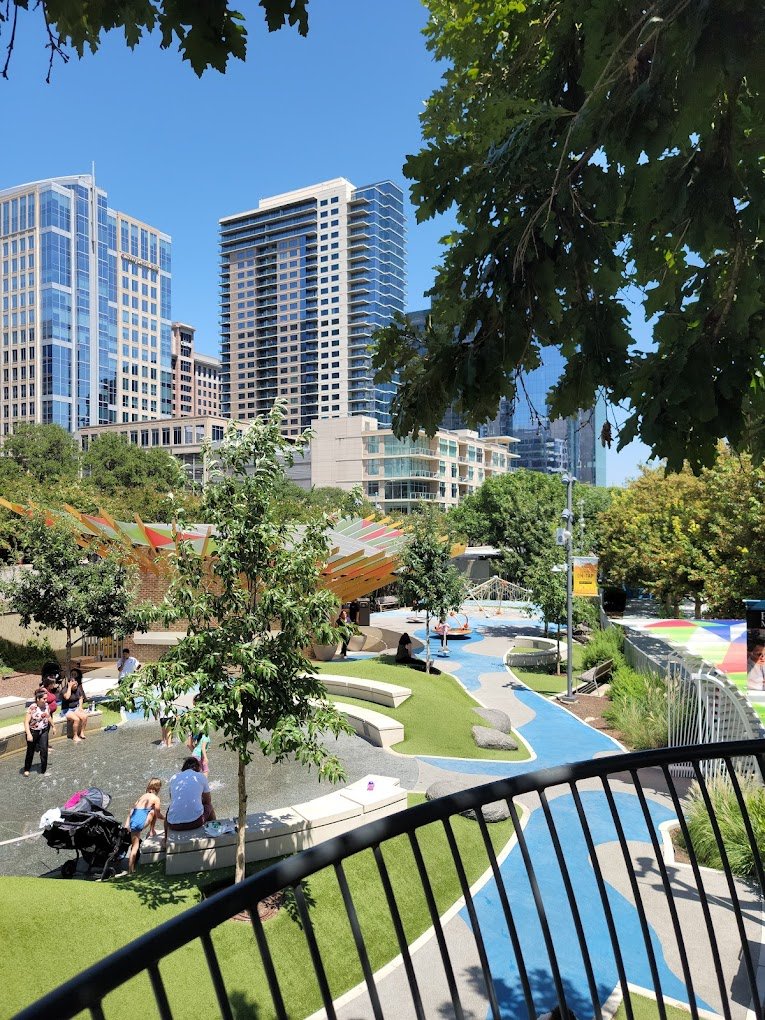I was in The BIG D over the weekend to hang with my good ol' girlfriends from architecture school. We went out for dinner and drinks to the gastropub in the hip and happening Klyde Warren Park, at the intersection of uptown and downtown Dallas. It was a wonderful spring evening and the park was teeming with people - lines at the food trucks, children frolicking in the water jets, people kicking back on the lawn, kids at the playground, people strolling along the tree-lined promenade. To think that just a couple years ago, this spot was empty. Literally. It is, after all, a man-made green-bridge over the sunken part of Woodall Rodgers Freeway. What used to be and what is now.
Quite the transformation, don't you think! From dull grey to vibrant green, a dark chasm to a sunlit nexus, from zipping by at 70 miles an hour to standing still. There is something about greenery that changes a space from dire to a happy place.
While this is not the first deck-park ever, it is certainly one of the most ambitious and more successful ones. It received the prestigious 2014 ULI Urban Open Space Award as "an outstanding example of a vibrant public destination that has enriched and revitalized its surrounding community". Also, it earned LEED gold.
Good thing they decided to go all the way and build 5 acres of deck instead of opting for the "practical and economical" alternative design that was initially proposed. The fact that the executed design option was over twice the original estimated cost of $45 million is, well, money under/ over the bridge!
It is apparent that this new urban oasis has become a destination for Dallasites and visitors alike. I've been to Dallas twice since the park opened in the fall of 2012 and paid a visit both times. Once with my hair down, entertaining kids, and the other in stilettos. The park lent itself well on both occasions.
In no small measure, a result of it's design. This is no nature trail.
The contemporary design is courtesy of The Office of James Burnett, a renowned landscape architecture firm based in Houston. Carefully crafted amenities (that attract a variety of people) are arranged along a sweeping pathway like "outdoor rooms" that reveal themselves as you stroll by. A gleaming performance pavilion, a modern restaurant, a gathering turf bordered by shapely trees, a garden, multiple water features - all perfectly manicured spaces, packed with purpose.
Seems only fitting. The urban context is hard to miss in the shadows of the 500 foot tall Museum Tower (by Johnson Fain), Chase Tower and Trammell Crown Center (by SOM), and other notable skyscrapers that define the downtown skyline. The park needs to stand it's own around architectural icons that surround it, such as the Fountain Place Building (by I.M.Pei), Dallas Museum of Art (by Edward Larabee Barnes), Nasher Sculpture Center (by Renzo Piano), Perot Museum (by Morphosis Architects), etc.
Indeed, there are 320 Oak and Cypress trees, all in a neat line, but no, the idea is not to transport you to the midst of a natural landscape. But to bring people to the midst of the city.
To that end, the park management does a fantastic job of keeping their event calender full of free activities, and promoting the park through press releases, blog posts, and social media. Although the park is owned by the city of Dallas, it is privately operated by the Woodall Rodgers Park Foundation.
My friend clearly takes pride in this addition to her city, as well she should. It takes many steps away from the perception that Dallas is a concrete jungle dotted by large parking lots separated connected by a web of multi-lane freeways. In fact, the improved image is the result of 10 year initiative to add more green space to downtown. And it all started with a vision.
Cheers,
Sharon.







